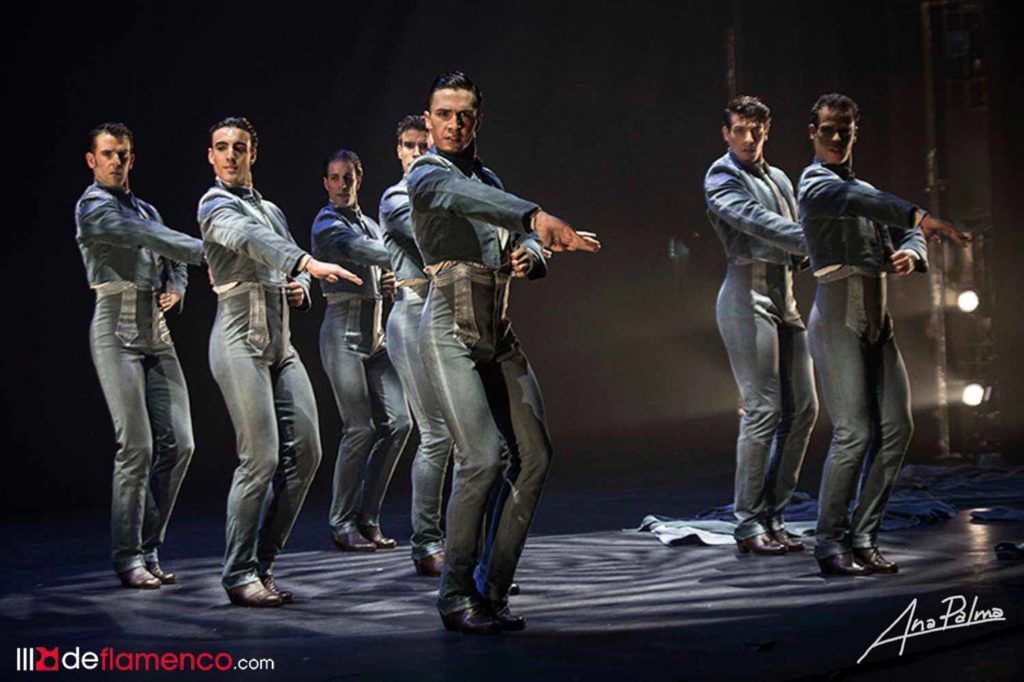24th FESTIVAL DE JEREZ
Saturday, March 7th, 2020
BALLET NACIONAL DE ESPAÑA
Teatro Villamarta, 9:00pm
Photo gallery – video
INVOCACIÓN BOLERA, JAULEÑA, ETERNA IBERIA, DE LO FLAMENCO. HOMENAJE A MARIO MAYA.
Basic list of artists – Choreography: Rubén Olmo, Antonio Najarro, Mario Maya, Mirián Mendoza, Milagros Menjíbar, Rafaela Carrasco, A. Rueda “Toná”, Manolo Marín, Isabel Bayón. Music: Manuel Busto, Manuel Moreno-Buendía, Diego Carrasco, Jesús Torres, Moraíto Chico, Los del Río. Voice: Saray Muñoz, Gabriel de la Tomasa, Luisa Carmona, Noemi Humanes, Juan José Amador “El Perre”. Guitar: Diego Losada, Víctor Márquez, Pau Vallet. Percussion: Roberto Vozmediano. Dance: Members and guest artists of the Ballet Nacional de España.
The Festival de Jerez 2020 has closed its imaginary doors with a banquet of luminous art, music and great beauty. The beauty of a cultural heritage that with this project goes on record to be preserved for future generations. Spanish art whose most fundamental character seems to send an urgent message to the entire world indicating that we must embrace both joy and tragedy with equal passion, because they’re the raw material of life itself. My much-admired friend, Marta Carrasco, an authority on these questions, says Spanish dance and flamenco together represent the most difficult dance discipline to dominate the entire spectrum.
At first glance, the program appears impossibly long and impenetrable for a simple flamenco fan. But then, among the numerous cast of artists you see the names of Diego Carrasco, Moraíto, Milagros Menjíbar, Rafaela Carrasco, Jesús Torres and Manolo Marín, not to mention Mario Maya, who is the object of a tribute, and you know you’re in the right place, because the path from essential bolero school dance to flamenco is shorter than most people think.
Rubén Olmo has been director of the Ballet Nacional de España for six months. The program he directed which we saw last night, combines group numbers with solos and duets, a work of recuperation combined with conservation and creativity. Three new choreographies, including the affectionate tribute to the tremendous personality and genius of Mario Maya, brought the most moving moments for those of us who remember well his performances and choreographies: to see nine male dancers recreate Mario’s famous dance sitting in a chair really gets you right in the gut, what evocative power, and what a way to remember the maestro.
Lots of long train dresses, much complex choreography, genius material, with a literally uncountable number of interpreters, impeccable discipline, the rhythm of soleá like the sound of a heartbeat, guitarists and singers who are nearly lost amidst the intense activity, twirling shawls, broad-brimmed hats, bullfighters with their capes and no danger of things getting corny, and the presence of Diego Carrasco through his music and texts. Even a multitudinous bulerías dance bit, and everyone arrives safe and sound to the same station, happy to have experienced these exciting moments.

